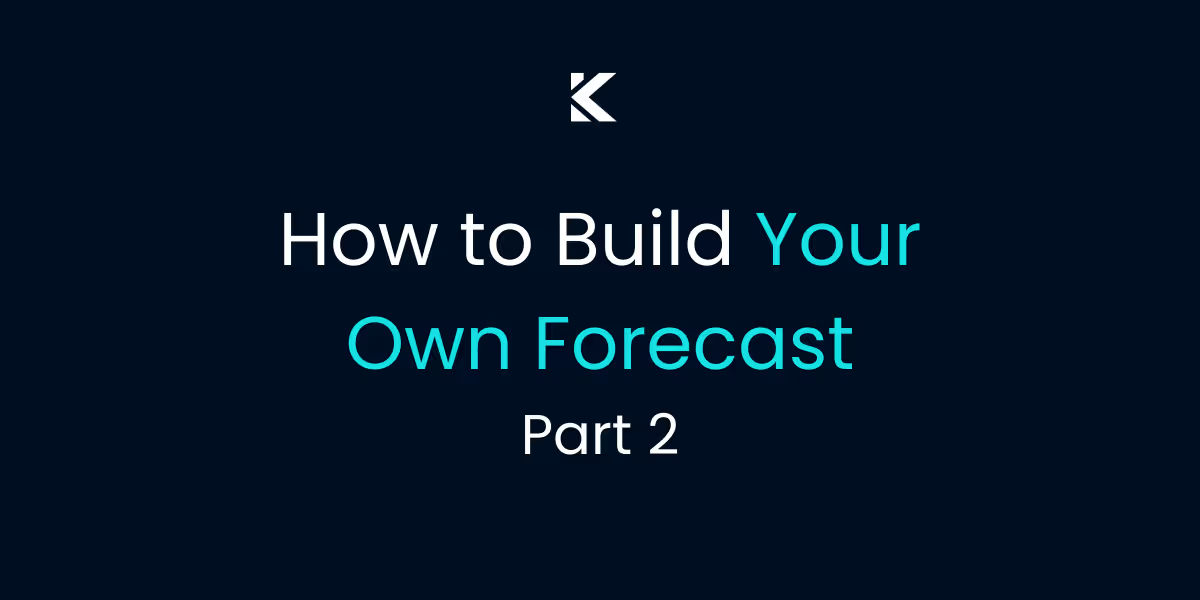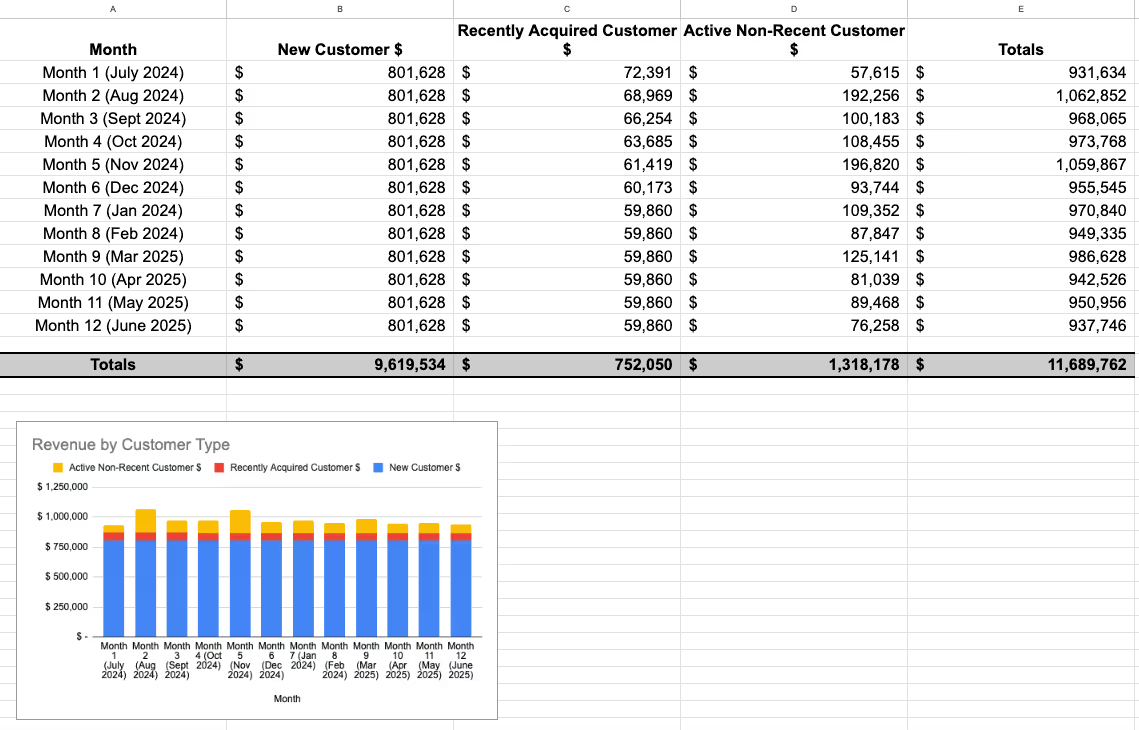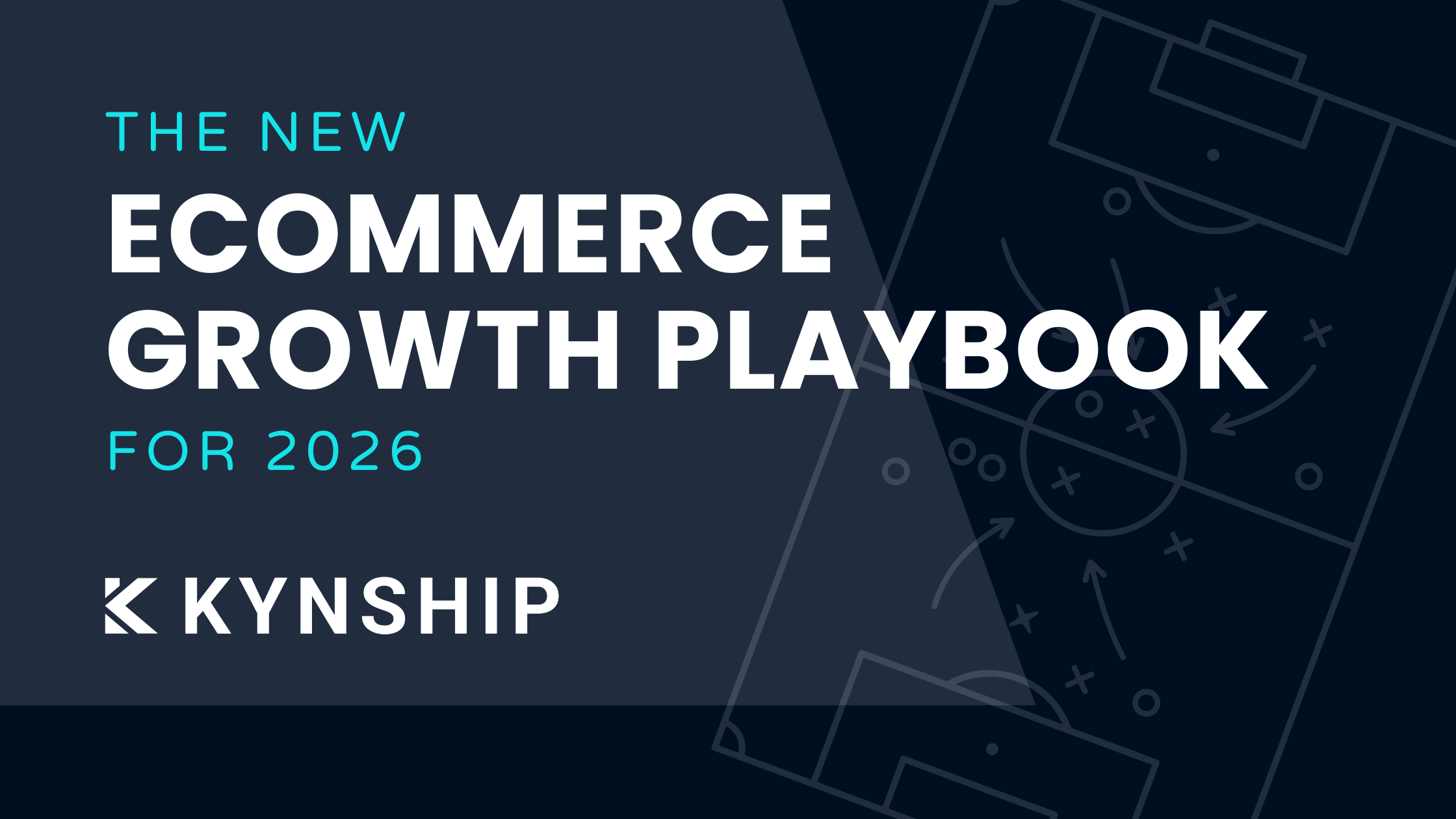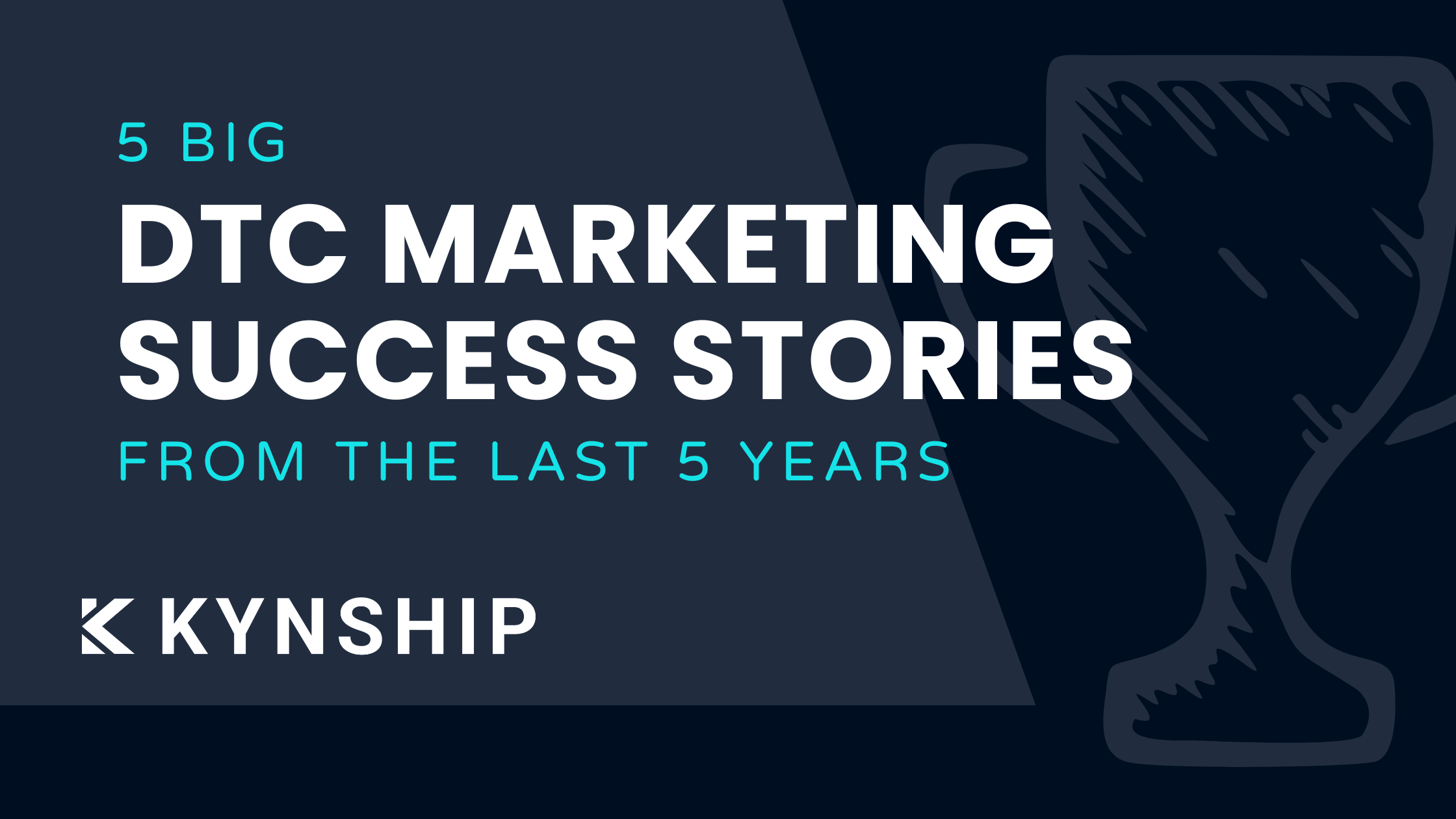How to Build and Evaluate a Financial Forecast: A 5-Step Guide

Financial forecasting is the process of projecting every financial metric in your business. The calculation considers brand seasonality, fixed costs, and a future spending analysis.
In the first part, we covered the basics of financial forecasting—its benefits, essential ingredients, and how to get started.
In this article, you’ll learn how to create and analyze a financial forecast.
Prefer video over text? Watch this roleplay between Cody (playing the founder of a skincare brand) and Taylor sharing the same steps listed below:
How to Create and Analyze a Financial Forecast for Your Business in 5 Steps
Here’s a five-step guide to create your financial forecast:
Step 1: Answer these three foundational questions
I get it: You want to hit the ground running and start advertising as soon as yesterday. But the first step should always be solidifying and structuring your goals. If you don’t know where to go, how will you reach your desired destination?
We ask these three questions to every client:
1. What are your goals as a business?
Answering this question will help you obtain the big picture view. Someone trying to build a generational business will have very different goals than someone who ultimately wants to sell. Get specific about what you want from your business in the long-term.
2. If you plan to sell, what’s the timeline? And for how much do you want to sell?
There are many nuances to consider once you answer the first question. Do you have a flexible goal? For example, if you want to sell, maybe you want to do so after a certain number of years or achieving a specific revenue target. Or maybe your goal is more concrete — like making $200M in 4 years. Consider which bracket you fall into if you plan to sell your business.
3. What are your monthly top line and bottom line financial goals in relationship to your stated goals above?
The answer to this question will depend on your answer to the first question. You need to dig deep into the numbers here. For example, do you want to achieve 25% growth YOY or 30% during peak sales? The answer will depend not only on your goals but also on your market and industry.
Answering these foundational questions will pave the way for sustainable growth rather than shooting a shot in the dark. Not to mention: Knowing your overarching ultimate aim will help you save a lot of time and build momentum.
Step 2: Gather as much historical data as possible on a per-SKU basis
Where possible, collect up to two years of historical data. Focus on brand seasonality and also outline a future spending analysis. We recommend collecting the following metrics:
- Any and all business metrics: This includes gross margin, COD, fixed costs, COGS, etc.
- Recent customer repeat rate: Customers acquired in the last 180 days qualify for this.
- Active, non-recent customer repeat rate: This includes buyers who purchased in the last 180 days, but were acquired before.
- Customer churn rate: Include this metric to understand seasonality and retention rate.
- Cost breakdown by product SKU: This will help you calculate breakeven CAC and first-order contribution margin — which are the true measures of profitability.
- Future spend analysis: Use your business metrics and seasonality to find this metric.
- Blended COGS: This is also relative to breakeven CAC; so it’ll also help measure profitability.
- Above target spend analysis: This is the percentage of wasted spend in dollars relative to the total ad spend.
- Creative scoring: Break down your creatives by diversity — (static vs. video, product vs. human). Also find out the total creative volume in campaigns.
These metrics will help you audit your finances and create a reasonably accurate financial forecast.
Also, did you notice how our financial forecasting method requires you to input all the business metrics, not just those related to advertising? This is because you want a complete 360-degree picture of your business. Having full context will help you create a growth plan that isn’t blindsided by the other facets of your company.
In this step, we also recommend spotting business levers that can influence your customer acquisition goals — and ultimately help you reach the objectives set in step one.
Step 3: Conduct a cohort analysis of new and returning customers
Remember how we calculated the recent customer rate and active, non-recent customer rate in the previous step? This data will help you segment customers into three groups:
- New customers (first-time buyers)
- Recently acquired customers (who came in the past 180 days)
- Active, non-recent customers (who purchased in the past 180 days, but were acquired before then)
Why segment customers into cohorts? These three groups behave quite differently from each other, but consistently and predictably within the bounds of a cohort. Keeping them together might give you inaccurate data, but separating them will help you spot patterns and forecast how your customers will behave.

Play a little match the columns and put all the relevant data collected in step two to the right customer cohorts. Keep updating this over time to make decisions quickly and get deeper insights into your business performance.
Step 4: Establish clear, measurable, and achievable financial targets
With the data you collected from steps two and three, you can compare your unit economics & historical data with your total ad spend and CAC. For example, maybe you figure out that your cost of delivery is too high.
Now, you can set ad account targets based on your conclusions from the previous step (where you combined all metrics and matched them to varying customer cohorts). Your ad account aim can further level up to a profitability target and tie into your overall revenue goal. For example, when we worked with Saltyface on their financial forecast, we found:
- We need to maximize profit while maintaining a steady CAC
- We need to take into account brand seasonality and hit growth potential during peak season to cover operating expenses and increase the Contribution Margin
The best part is with all the data points you have, you’ll be able to engineer forecasts that are realistic, grounded in numbers, and achievable. You aren’t throwing stuff on the wall and seeing what sticks. Instead, you’re creating well-thought out targets based on your business’ historical data, performance, and customer behavior.
Remember that your targets will also depend on the overarching goals you set in step one. If you plan to sell in a handful of years at a high valuation, for instance, you’ll have to be a bit more aggressive in selling via ad spend. You can set benchmarks based on these forecasts, such as:
▶️ Target ROAS of 1: aggressive growth
▶️ Target ROAS > 1: growth with profitability
And when you know your profitability targets, you can set proper goals for your paid media strategy.
Step 5: Stick to a daily, weekly or monthly routine for updating your forecast
You can’t put financial forecasts on set-it-and-forget-it. Mark it in your calendars to update the cohort numbers weekly — they’ll provide insight into your ad performance to enable you to take the desired actions sooner. Do a deeper dive into your numbers and ad performance at the end of every month.
At Kynship we update forecasts daily, but you can stick to a minimum of weekly frequency if daily isn’t possible.
Quick Summary
To quickly summarize, here’s how you can create a financial forecast in five steps:
Step 1: Determine your long-term business goals. Do you want to sell? Or grow a generational business? What are your financial goals?
Step 2: Collect historical data on a per-SKU basis. Collect all business metrics, future spend analysis, target spend analysis, etc., for the past two years. These numbers will help analyze how far off you are from your goals right now and create accurate predictions about future growth.
Step 3: Conduct a cohort analysis of new and returning customers. Divide your customers into new, recently acquired, and new but non-recent customers. These cohorts behave consistently and predictably — which is exactly what we want.
Step 4: Establish clear financial targets. The analysis in steps two and three will help you understand areas of improvement to reach your goals. Maybe you need to improve your CAC or lower your delivery cost. Whatever it is, use these numbers to forecast your future growth accurately.
Step 5: Stick to a weekly and monthly schedule to update your forecast. A financial forecast is a living document. You can’t ghost it. Mark it in your calendars to update it regularly and do a deep dive every month. Change course as needed to reach your goals. Think of this as reflecting on your progress and ensuring you meet your targets.
In the next (and last!) article of this series, you’ll get a case study directly from the horse’s mouth: Learn how a co-founder used financial forecasting to achieve his goals.


5 DTC Marketing Success Stories From The Last 5 Years
Five real DTC marketing success stories from the last five years, breaking down how brands scaled despite rising CAC, creative fatigue, and tougher competition, plus key lessons you can apply today.

The New Ecommerce Growth Playbook For 2026
These are the ecommerce growth marketing strategies we are using right now to successfully scale DTC brands from $2M to $50M.
Bi-weekly tips to reduce your CAC
Join thousands of DTC operators and subscribe to Cut the CAC for insights from the Bottom Line Podcast and Kynship's growth strategies.


.avif)
.avif)
.avif)



